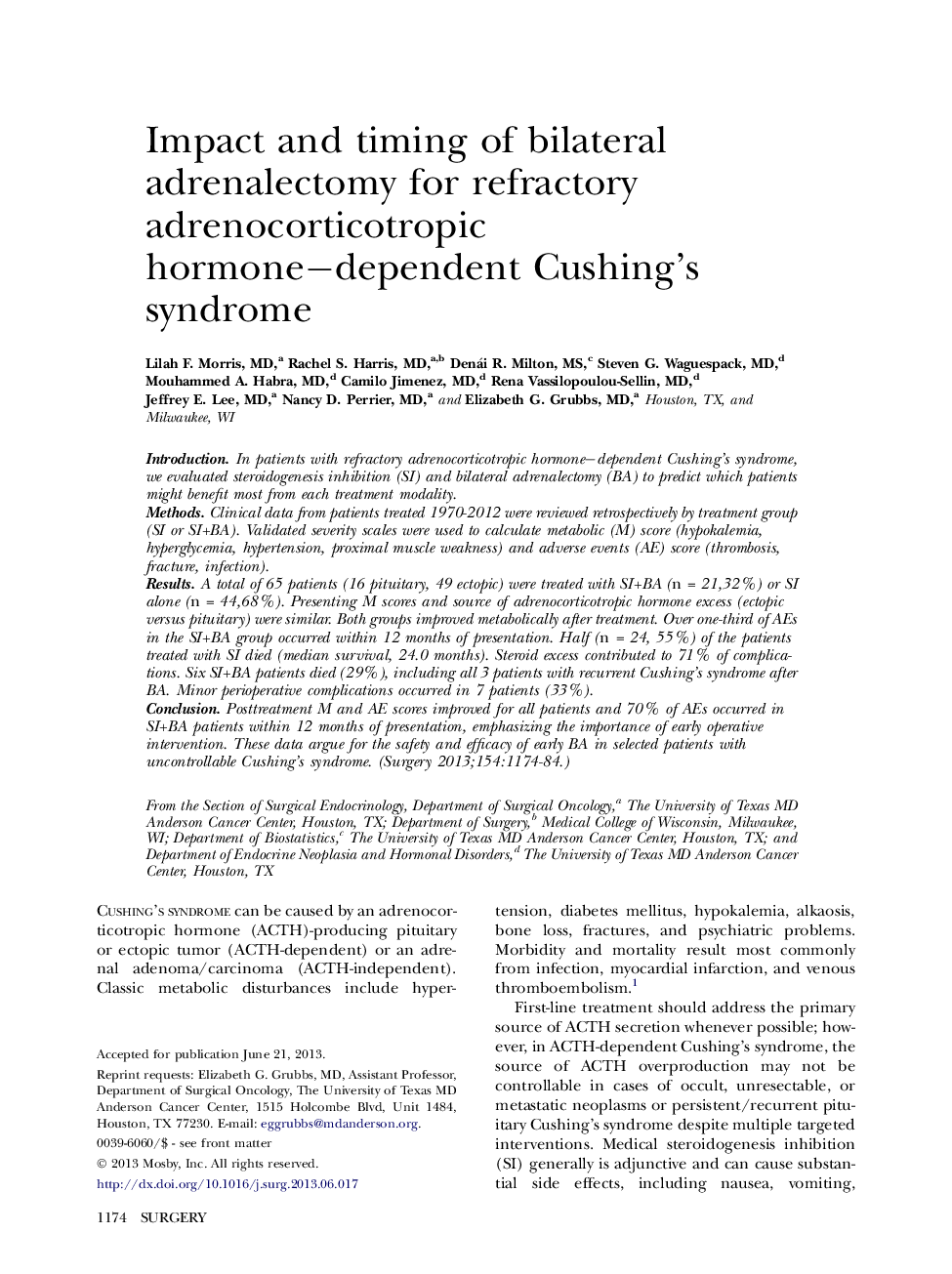| Article ID | Journal | Published Year | Pages | File Type |
|---|---|---|---|---|
| 4307043 | Surgery | 2013 | 11 Pages |
IntroductionIn patients with refractory adrenocorticotropic hormone−dependent Cushing’s syndrome, we evaluated steroidogenesis inhibition (SI) and bilateral adrenalectomy (BA) to predict which patients might benefit most from each treatment modality.MethodsClinical data from patients treated 1970-2012 were reviewed retrospectively by treatment group (SI or SI+BA). Validated severity scales were used to calculate metabolic (M) score (hypokalemia, hyperglycemia, hypertension, proximal muscle weakness) and adverse events (AE) score (thrombosis, fracture, infection).ResultsA total of 65 patients (16 pituitary, 49 ectopic) were treated with SI+BA (n = 21,32%) or SI alone (n = 44,68%). Presenting M scores and source of adrenocorticotropic hormone excess (ectopic versus pituitary) were similar. Both groups improved metabolically after treatment. Over one-third of AEs in the SI+BA group occurred within 12 months of presentation. Half (n = 24, 55%) of the patients treated with SI died (median survival, 24.0 months). Steroid excess contributed to 71% of complications. Six SI+BA patients died (29%), including all 3 patients with recurrent Cushing’s syndrome after BA. Minor perioperative complications occurred in 7 patients (33%).ConclusionPosttreatment M and AE scores improved for all patients and 70% of AEs occurred in SI+BA patients within 12 months of presentation, emphasizing the importance of early operative intervention. These data argue for the safety and efficacy of early BA in selected patients with uncontrollable Cushing’s syndrome.
